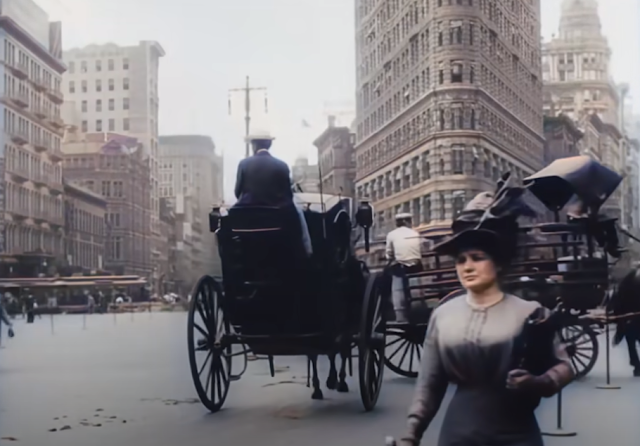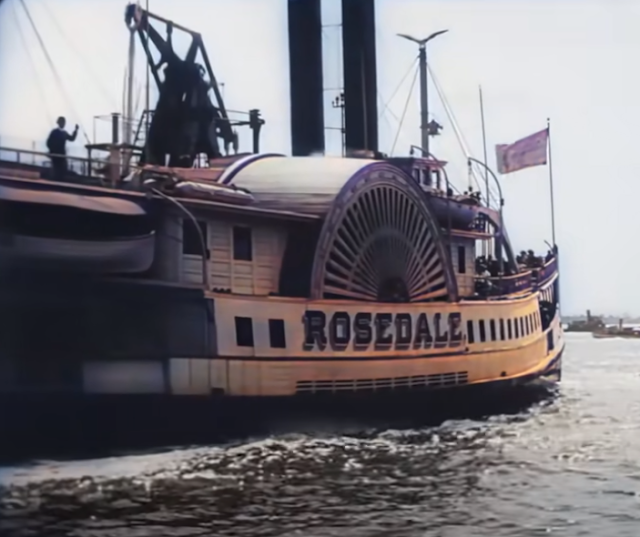Travel Back in Time to Colorful 1890s Paris
 |
| The Eiffel Tower when it was about ten years old. The plan when this was taken was to disassemble it in another ten years - the decision had not yet been made to keep it permanently. |
Okay, on with our discussion.
As you can see, the Avenue des Champ-Elysées was a wild affair in the 1890s. Huge carriages pulled by half a dozen horses carried ten or more people on top, while bicyclists darted around them and hoped they didn't fall off under the horses' hooves.
You will notice a two-speed moving sidewalk. That was the Rue de l'Avenir ('Street of the Future'), a 3.5 km long moving walkway designed as an attraction for the Exposition Universelle of 1900. It was designed in 1893 by American engineers Schmidt and Silsbee and installed on a seven-meter-high viaduct made up of three platforms, two of which were movable. The slower one was going at a speed of 4 km/h and the second at 8 km/h, both rather brisk paces for 1900. In 1888, futurist Edward Bellamy published his novel "Looking Backward: 2000–1887" in which he prophesied that these types of sidewalks would be the highways of the future. Apparently, the Parisians took him seriously and set up this demonstration project.
The restoration really brings out the high couture worn by everyday women on the streets of Paris. It is easy to understand why women overseas waited anxiously for the "latest fashions from Paris." Women in New York City during this era generally wore formless and severe black dresses, quite unlike the fancy and colorful attire of Belle Époque-era Paris.
 |
| Traffic was brisk in the 1890s. |
 |
| Rue de l'Avenir. |
Firefighters apparently out on a drill, their wagons all pulled by stately teams of white horses. Everybody is very respectful, anyone's home could burn down at any time in those days.
The boys playing with boats are at the Jardin du Luxembourg. The boat-rental concession there began about 1881 and remains in existence to this day.
Anyway, it is a fascinating treat to travel back through time and see a world that no longer exists. You may be interested in other classic old films of yesteryear, most in color:
2021












